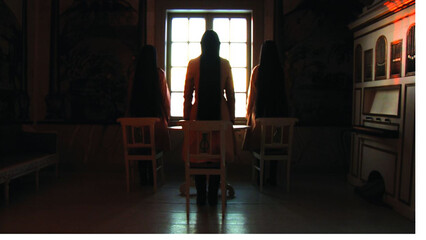Group Exhibition Wei-Ling Contemporary, Kuala Lumpur, Malaysia
Wei-Ling Contemporary is pleased to present Aesthetics of Silence. Through this curated project, the gallery will be working with a critically acclaimed lineup of international artists from around the world including Arin Rungjang (Thailand), H.H. Lim (Italy), Heather Dewey-Hagborg (USA), Ivan Lam (Malaysia), Melati Suryodarmo (Indonesia), Rajinder Singh (UK/Malaysia), Robert Schaberl (Austria), Roger Ballen (South Africa). The title of the show borrows Susan Sontag’s first essay from her famous oeuvre, Styles of Radical Will (1969), in which she examines how silence mediates the role of art as a form of spirituality, particularly in a globalised world.
In this essay, Sontag wrote, “Every era has to reinvent the project of “spirituality” for itself,” and that “in the modern era, one of the most active metaphors for spiritual projects is art.” To her, art is a form of mystification of the secular culture that characterises the modern times; although its practice could be a form of consciousness, it is also an antidote to consciousness. In an increasingly complex, and noisy world, Sontag believes in “the mind’s need or capacity of self-etrangement”. As the world demands so much from us, and information travels synchronously from all directions, do we give enough precedence to silence? It is at such times that the pursuit of silence is needed, as a space of reflection, or what Sontag calls “a zone of meditation.”
The exhibition focuses on this concept of silence during a timely moment, in which simultaneously worldwide, we are forced to live remotely. All of a sudden, we have been given the space to isolate, sit with ourselves, and unlearn things; a chance to look at what we crave “beyond knowledge” and “beyond speech”, as Sontag terms it. While the exhibition takes Sontag’s essay as an entry point, it offers secondhand interpretations by the featured artists, through their own explorations on the metaphorical notion of silence. And yet, as Sontag points out, silence itself is relational; while it may be the intention of the artist, the audience may have a different perception to their work. “Silence doesn’t exist in a literal sense, however, as the experience of an audience.” Thus, the exhibition interrogates the idea of an individual consciousness through the audience’s participatory experience, and challenges how it could be interconnected through a shared space.
Altogether, the collective exhibition explores how silence could be interpreted through different languages of art, starting from performance, installation, video art, photography, and the written word. In the Aesthetics of Silence, artists commemorate the concept of silence as a state of flux instead of a definitive event or subject, seeing it as a medium to access different notions: social injustice, truth, identity, reality, trauma, fragility, and the human psyche.



